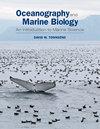Spawning aggregations of coral reef fishes: characteristics, hypotheses, threats and management
1区 生物学
Q1 Agricultural and Biological Sciences
引用次数: 138
Abstract
Many coral reef fishes migrate to form short-lived aggregations at predictable sites and times in order to spawn. For the purposes of this review, such spawning aggregations are defined as any temporary aggregations formed by fishes that have migrated for the specific purpose of spawning. Spawning aggregations are known to be formed by 164 species from 26 families of coral reef fishes, but the actual number is likely to be much higher. Aggregative spawners share a number of common features. (1) All except one species release pelagic eggs. (2) They tend to have large body sizes. (3) They are more abundant in some phylogenetic groups, such as the Labridae, Scaridae, Serranidae, Acanthuridae, and Lutjanidae, although they are relatively uncommon in all but the least speciose families of Albulidae, Chanidae, Gerreidae, and Scombridae. (4) They are more likely to come from large populations with high densities. However, these features are not independent and their relative importance is not easily assessed. Known spawning aggregations form at the same sites over successive, predictable spawning seasons. However, from the limited data presently available, spawning aggregations do not appear to form consistently on predictable reef structures. The periodicity of spawning aggregations can differ greatly for the same species with relatively small degrees of spatial separation. A number of hypotheses have been proposed to explain why, when, and where spawning aggregations are formed. These include those that predict that the phenomenon of aggregative spawning (1) reduces predation on spawning adults and their eggs (the predator satiation hypothesis), (2) increases the degree of mate selectivity, and (3) allows individuals to assess sex ratios of populations and make decisions on sex change accordingly. Other hypotheses predict that the location and timing of spawning aggregations (1) reduce predation on both eggs (the egg predation hypothesis) and spawning adults (the predator evasion hypothesis), (2) increase the probability that larvae will settle on reefs (the egg dispersal hypothesis and the larval retention hypothesis), and (3) enhance the survival of larvae during their pelagic phase (the pelagic survival hypothesis). However, very little quantitative research addressed at an appropriate scale has been conducted to distinguish among these hypotheses, many of which make common predictions. Spawning aggregations of commercially important coral reef fishes have been lost in many locations throughout the tropics because unsustainable fishing targets the spawning aggregations themselves. The live reef food-fish trade has proven to be unsustainable in almost all locations in which it has operated, leading to widespread impoverishment and eradication of spawning aggregations. Appropriate management, legislation, and enforcement are essential to protect the stocks of commercially important aggregative spawners, as is a more comprehensive understanding of the dynamics of spawning aggregations.珊瑚礁鱼类的产卵聚集:特征、假设、威胁和管理
为了产卵,许多珊瑚礁鱼类会在可预测的地点和时间迁徙,形成短期聚集。为了本综述的目的,这种产卵聚集被定义为鱼类为了特定的产卵目的而迁徙形成的任何临时聚集。据了解,产卵群由26科珊瑚礁鱼类的164种组成,但实际数量可能要高得多。集合产卵者有许多共同的特征。(1)除一种外,其余种均释放远洋卵。它们的体型往往很大。(3)它们在一些系统发育类群中较为丰富,如唇虱科、刺虱科、Serranidae、棘虱科和Lutjanidae,尽管它们在白蛉科、刺虱科、Gerreidae和Scombridae中相对较少。(4)它们更有可能来自高密度的大种群。然而,这些特征并不是独立的,它们的相对重要性也不容易评估。在连续的、可预测的产卵季节里,已知的产卵聚集在同一地点形成。然而,从目前有限的数据来看,在可预测的珊瑚礁结构上,产卵聚集似乎并不一致。在空间分隔度相对较小的情况下,同一物种的产卵聚集周期差异很大。人们提出了许多假设来解释为什么、何时以及在何处形成产卵聚集。其中包括预测聚集产卵现象(1)减少了对产卵的成年鱼及其卵的捕食(捕食者满足假说),(2)增加了配偶选择的程度,(3)允许个体评估种群的性别比例并相应地做出性别改变的决定。其他假说预测产卵聚集的地点和时间(1)减少了对卵(卵捕食假说)和产卵成虫(捕食者逃避假说)的捕食,(2)增加了幼虫在珊瑚礁上定居的概率(卵扩散假说和幼虫滞留假说),(3)提高了幼虫在其上层阶段的存活率(上层生存假说)。然而,很少进行适当规模的定量研究来区分这些假设,其中许多假设做出了共同的预测。在整个热带地区的许多地方,具有重要商业价值的珊瑚礁鱼类的产卵群已经消失,因为不可持续的捕捞活动以产卵群本身为目标。事实证明,在几乎所有开展活动的地方,活礁食用鱼贸易都是不可持续的,这导致了广泛的贫困和产卵群的消失。适当的管理、立法和执法对于保护具有重要商业价值的聚集产卵鱼的种群至关重要,对产卵聚集动态的更全面了解也至关重要。
本文章由计算机程序翻译,如有差异,请以英文原文为准。
求助全文
约1分钟内获得全文
求助全文
来源期刊
自引率
0.00%
发文量
0
期刊介绍:
With increasing interest in the field and its relevance in global environmental issues, Oceanography and Marine Biology: An Annual Review provides authoritative reviews that summarize results of recent research in basic areas of marine research, exploring topics of special and topical importance while adding to new areas as they arise

 求助内容:
求助内容: 应助结果提醒方式:
应助结果提醒方式:


